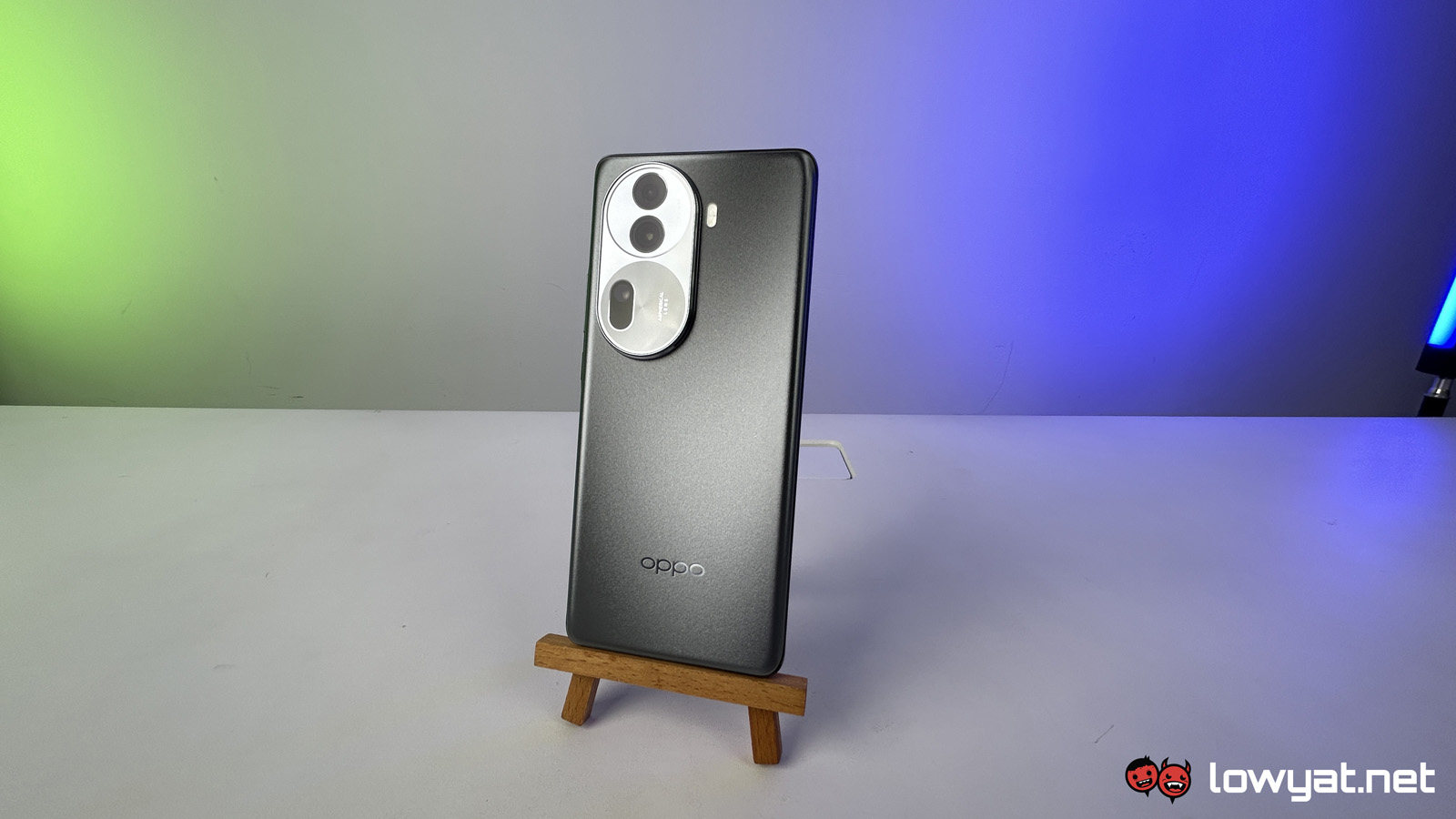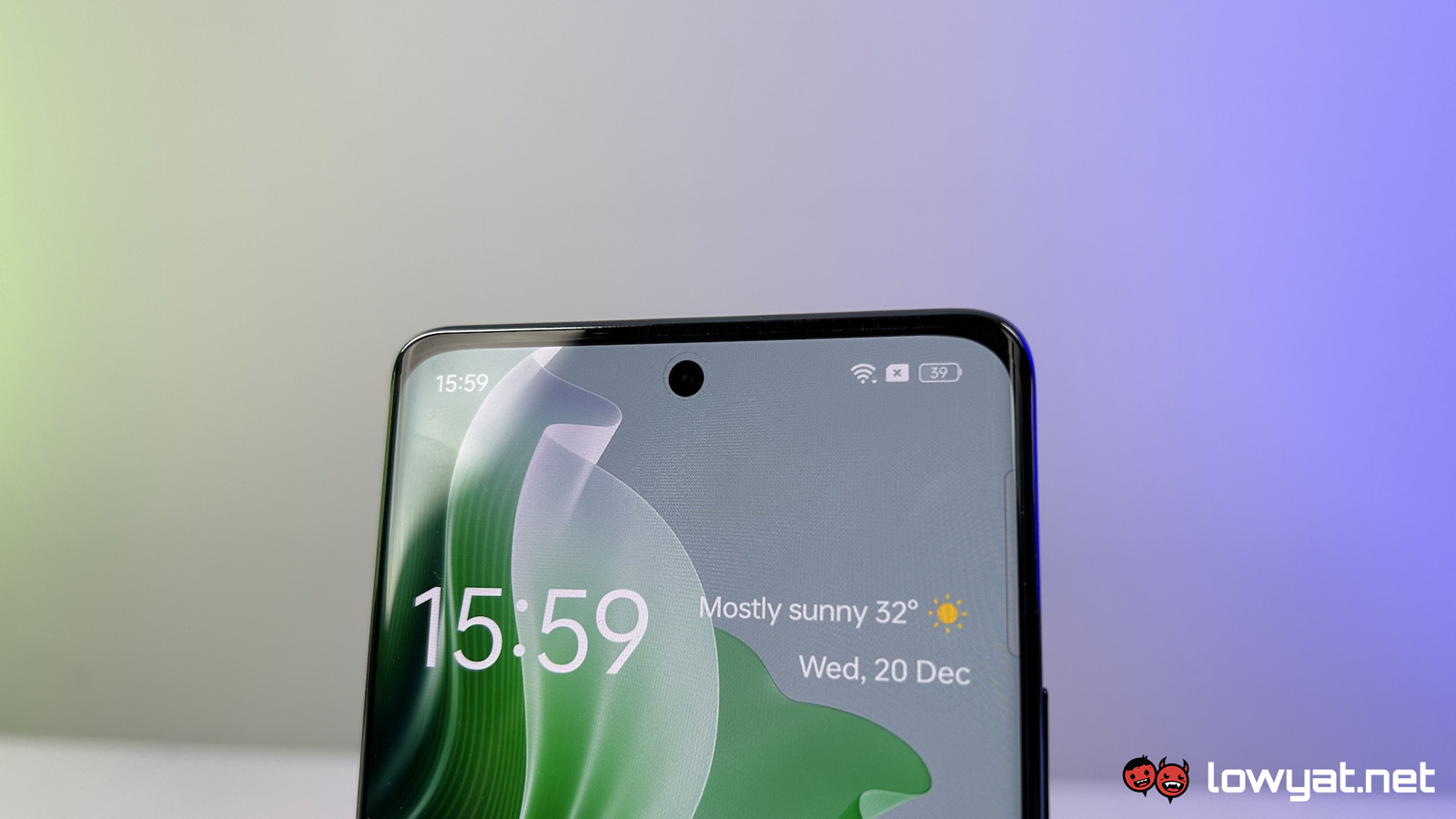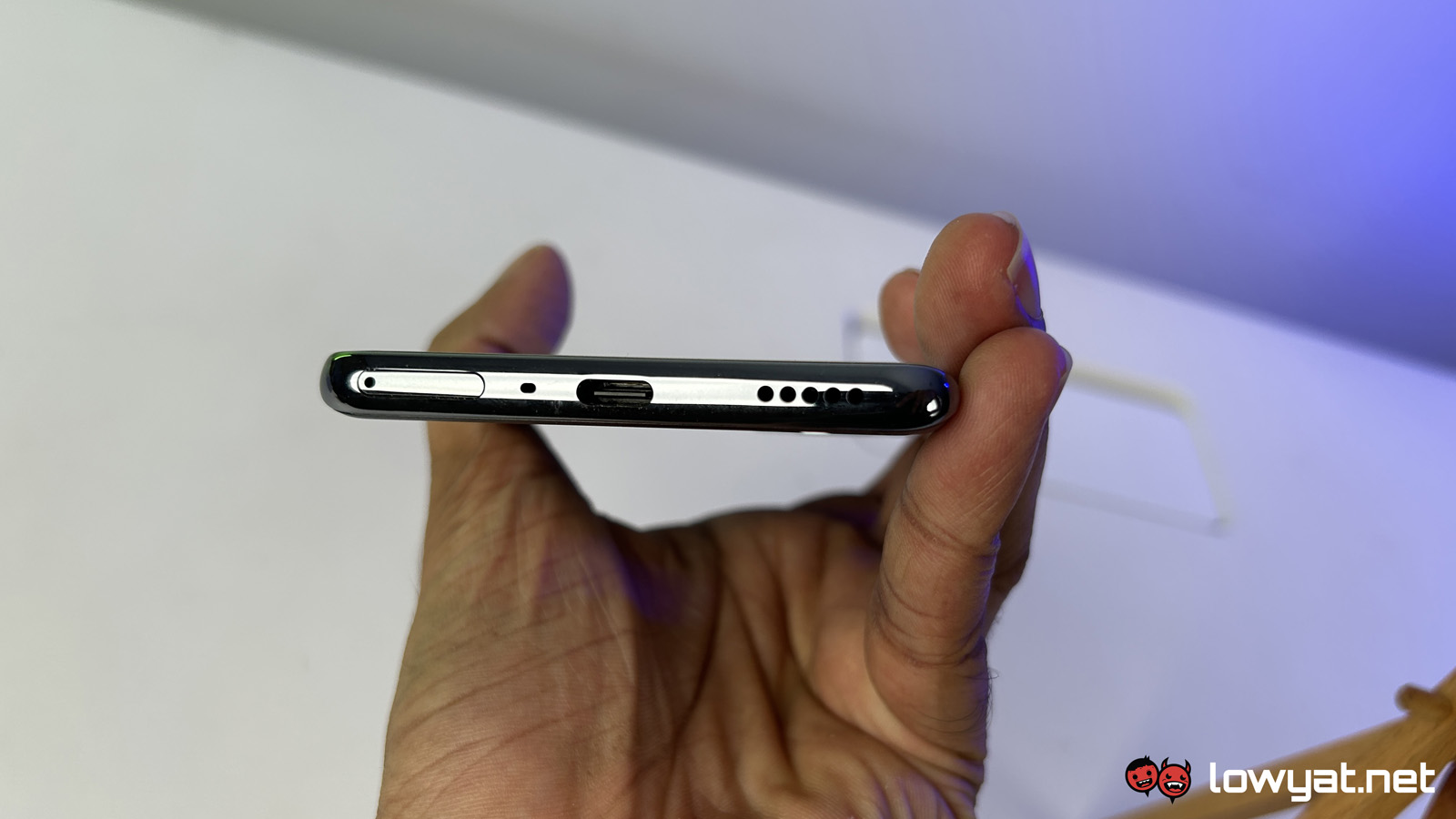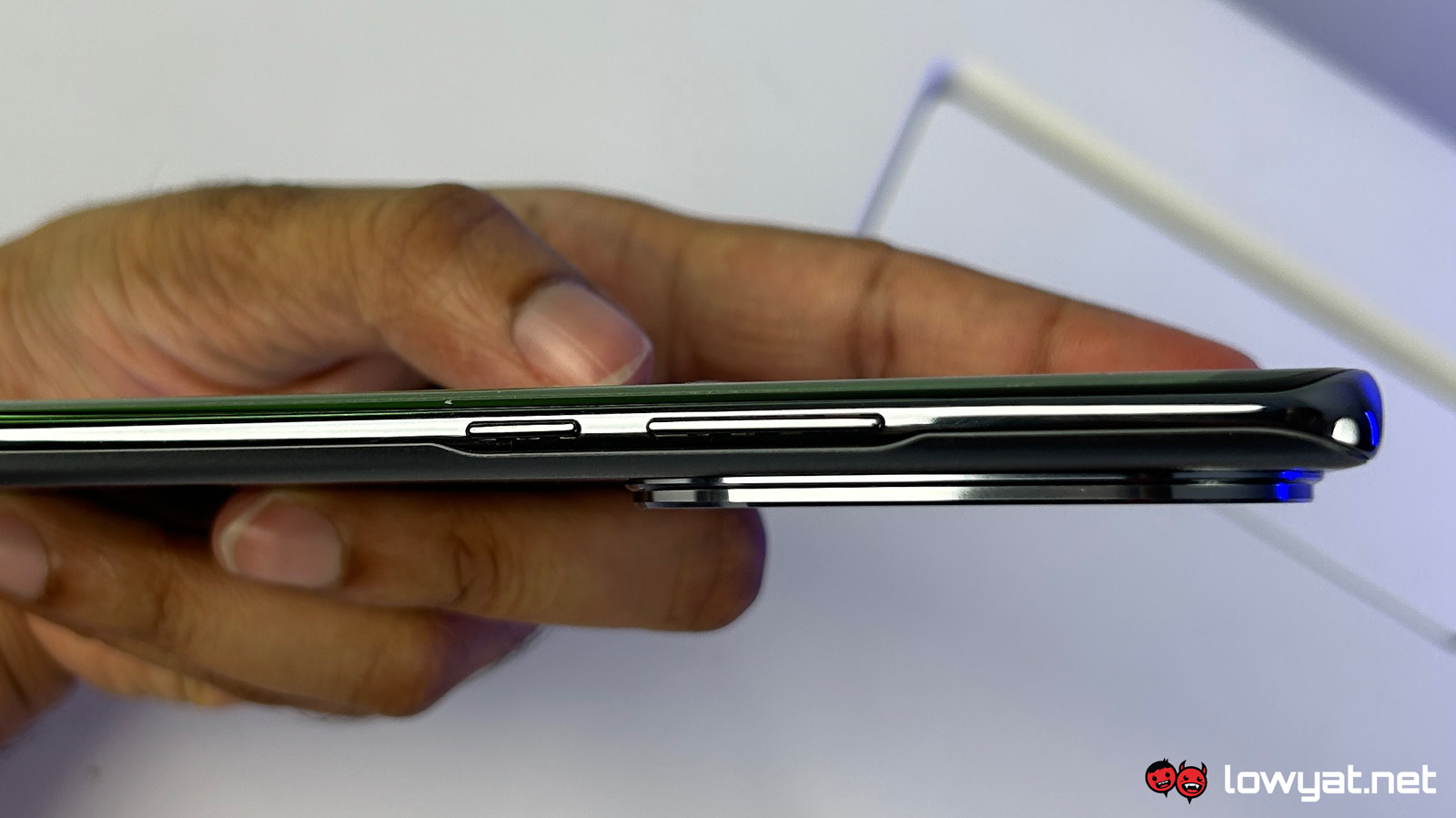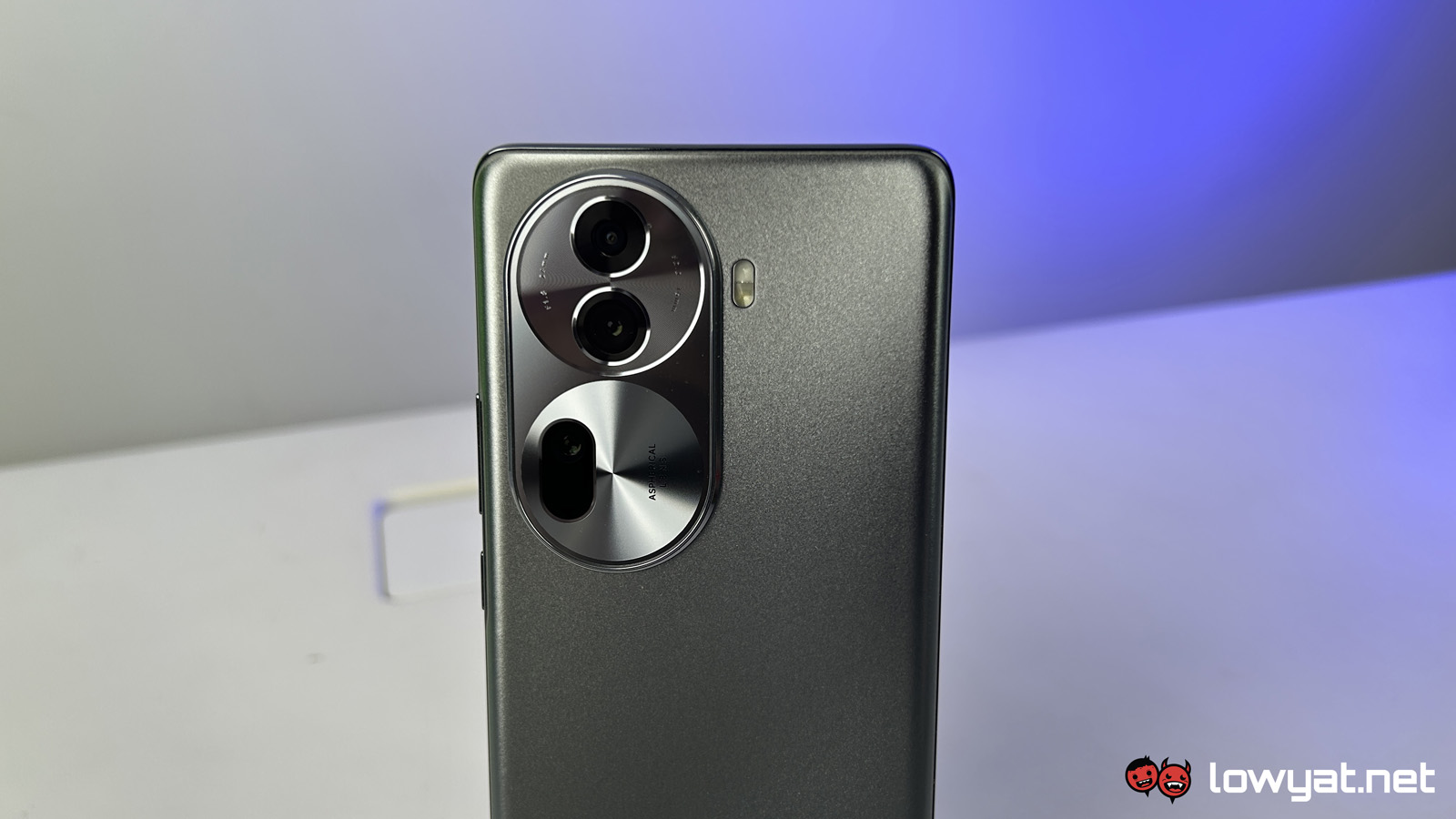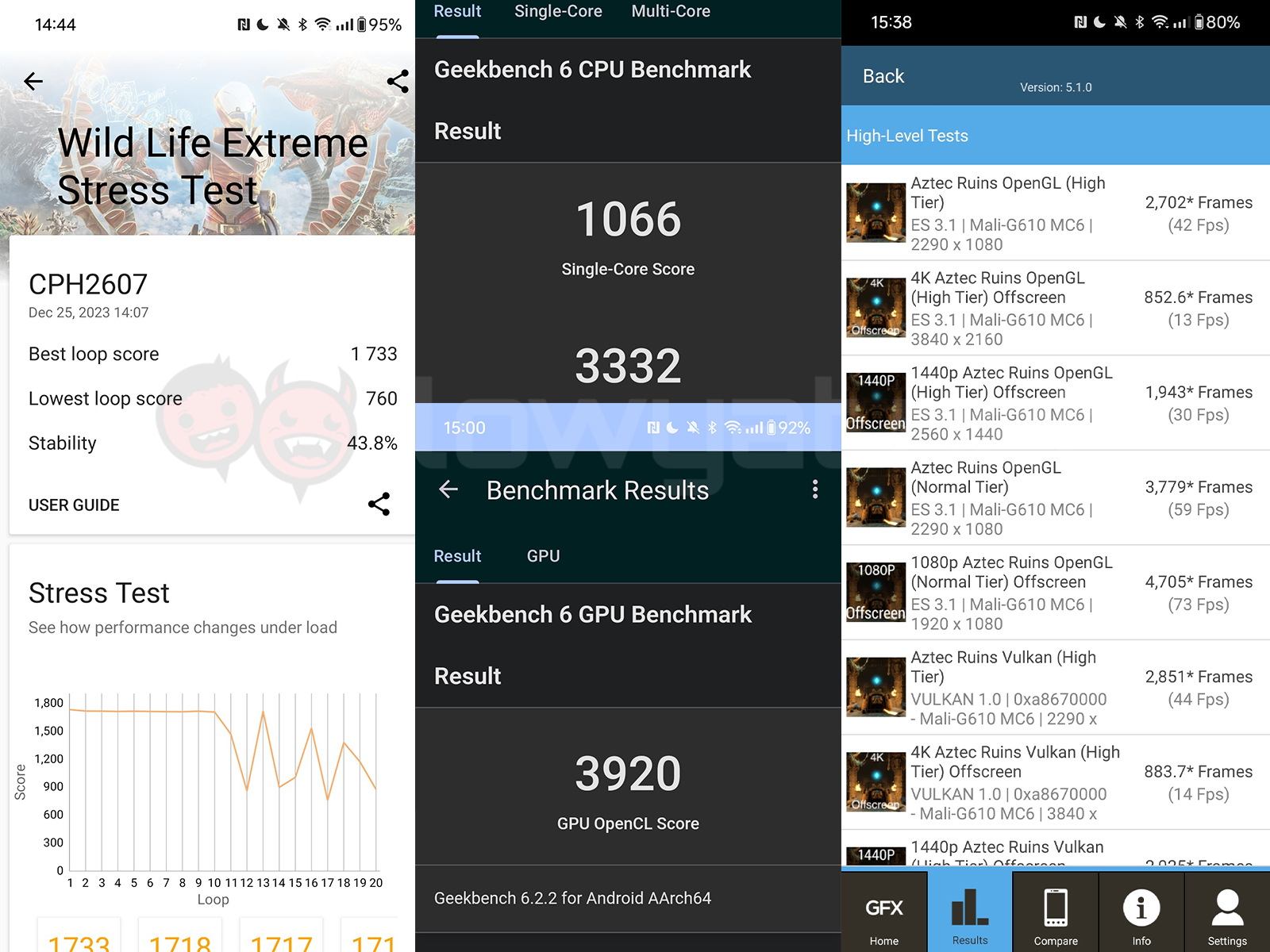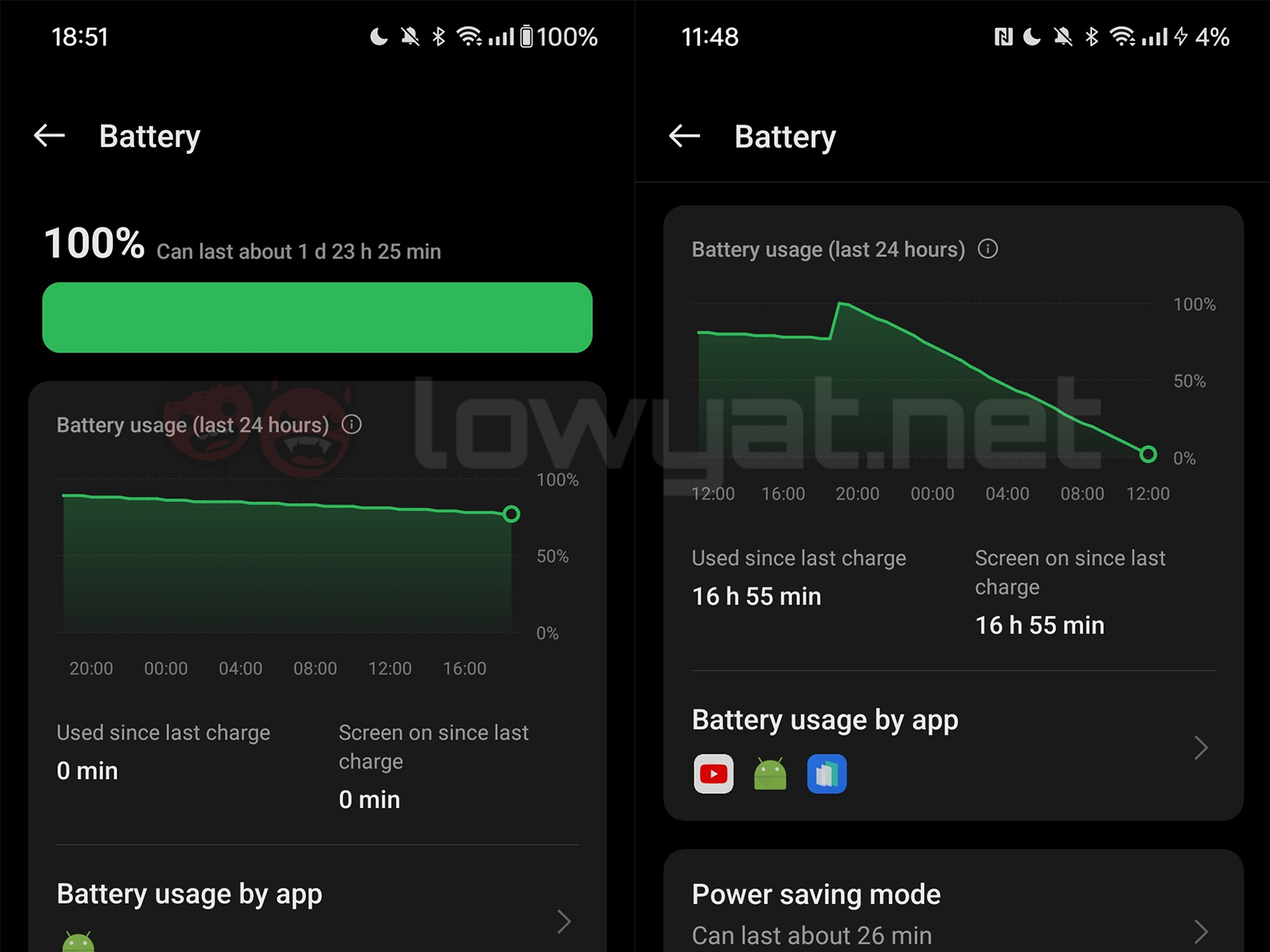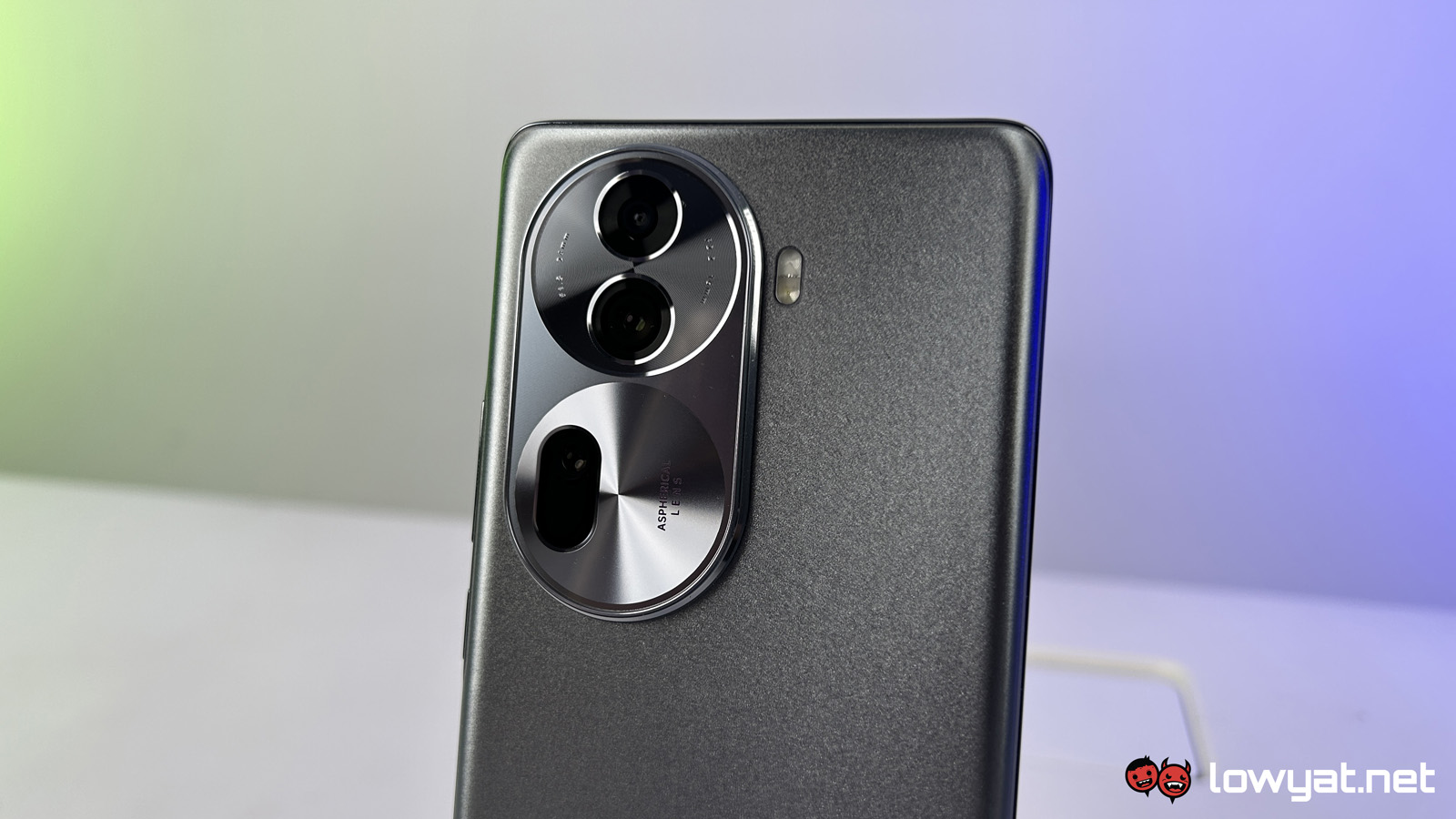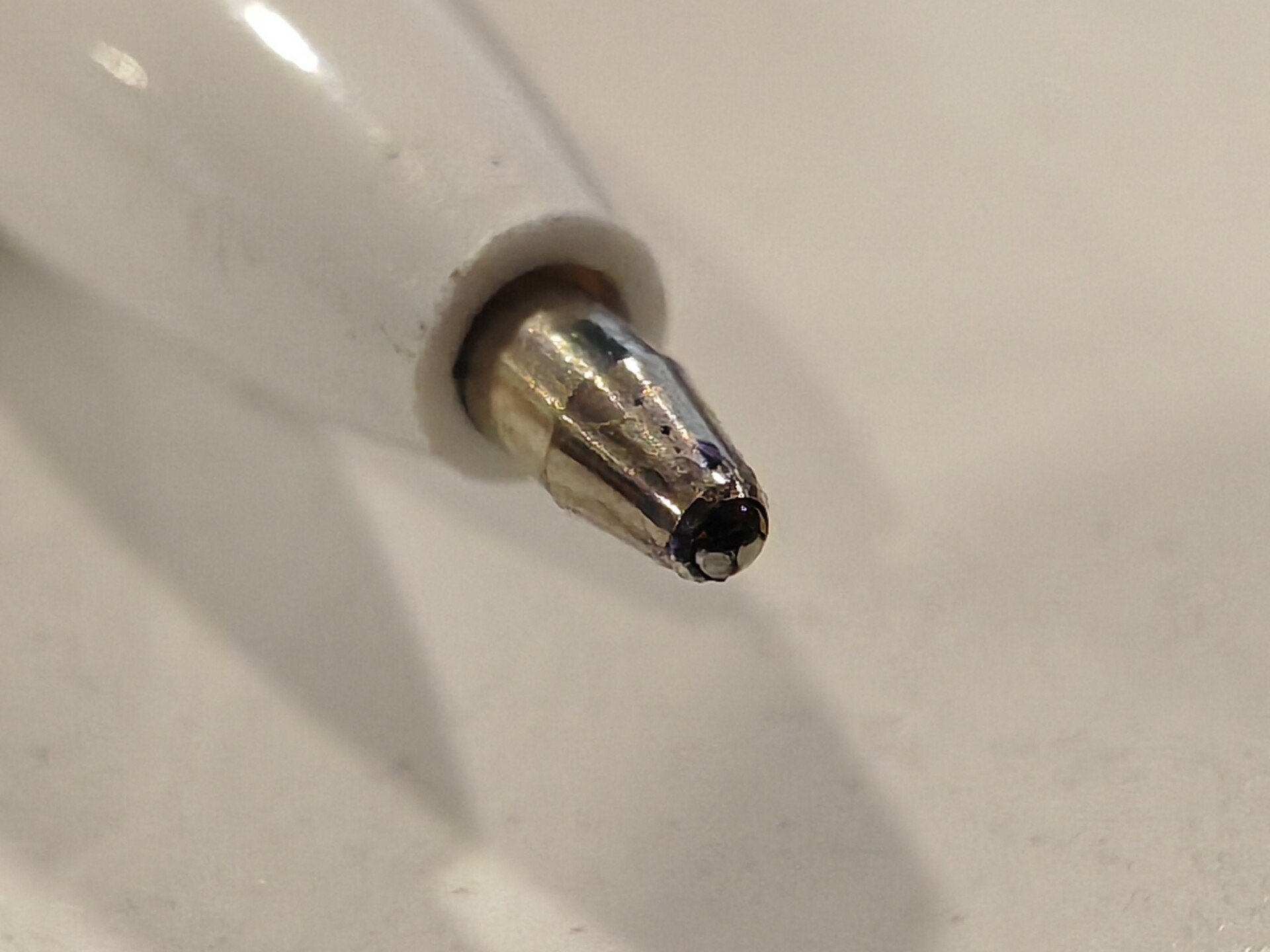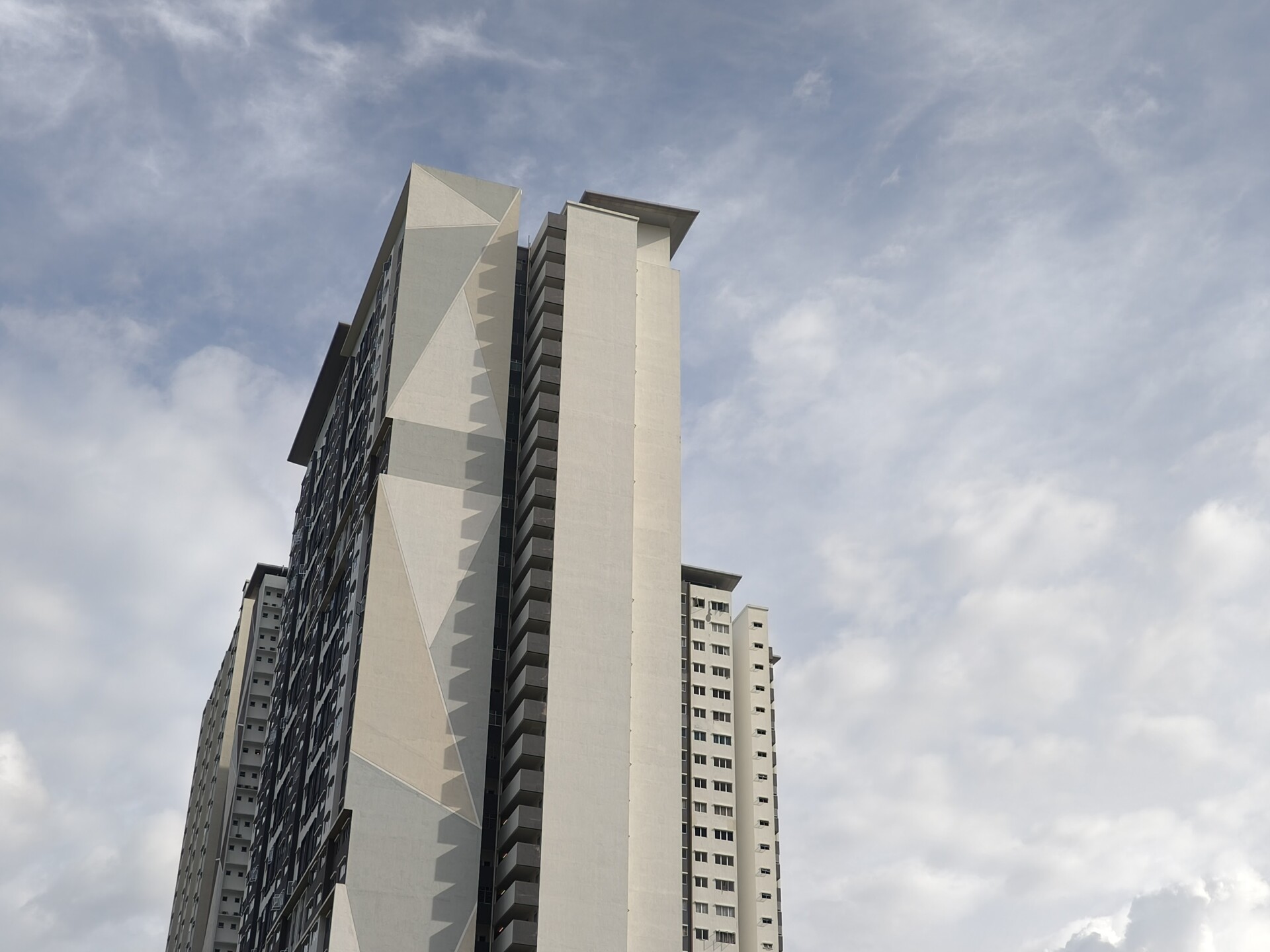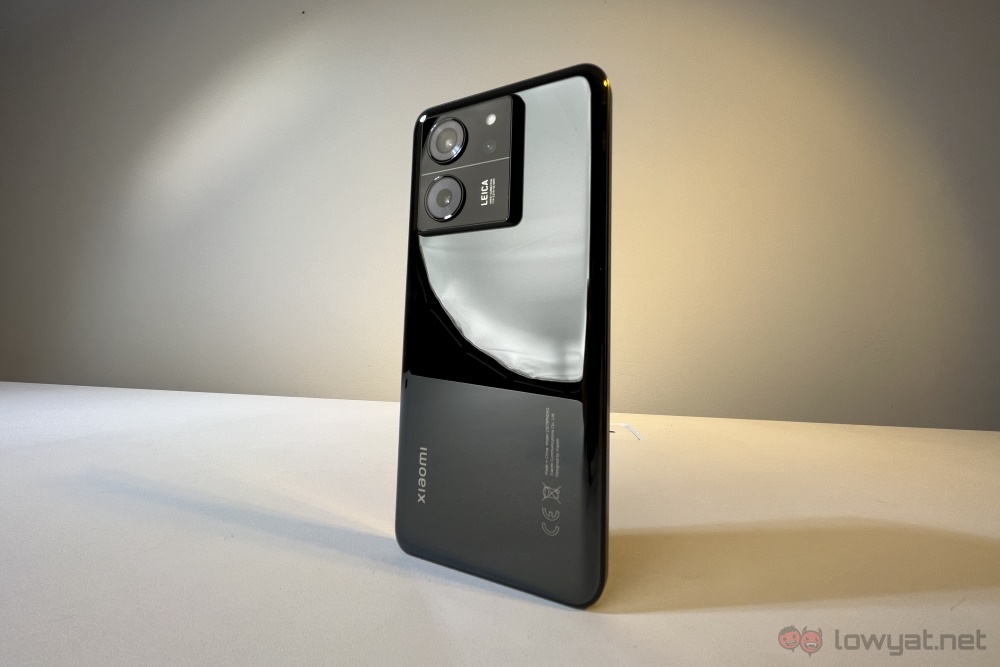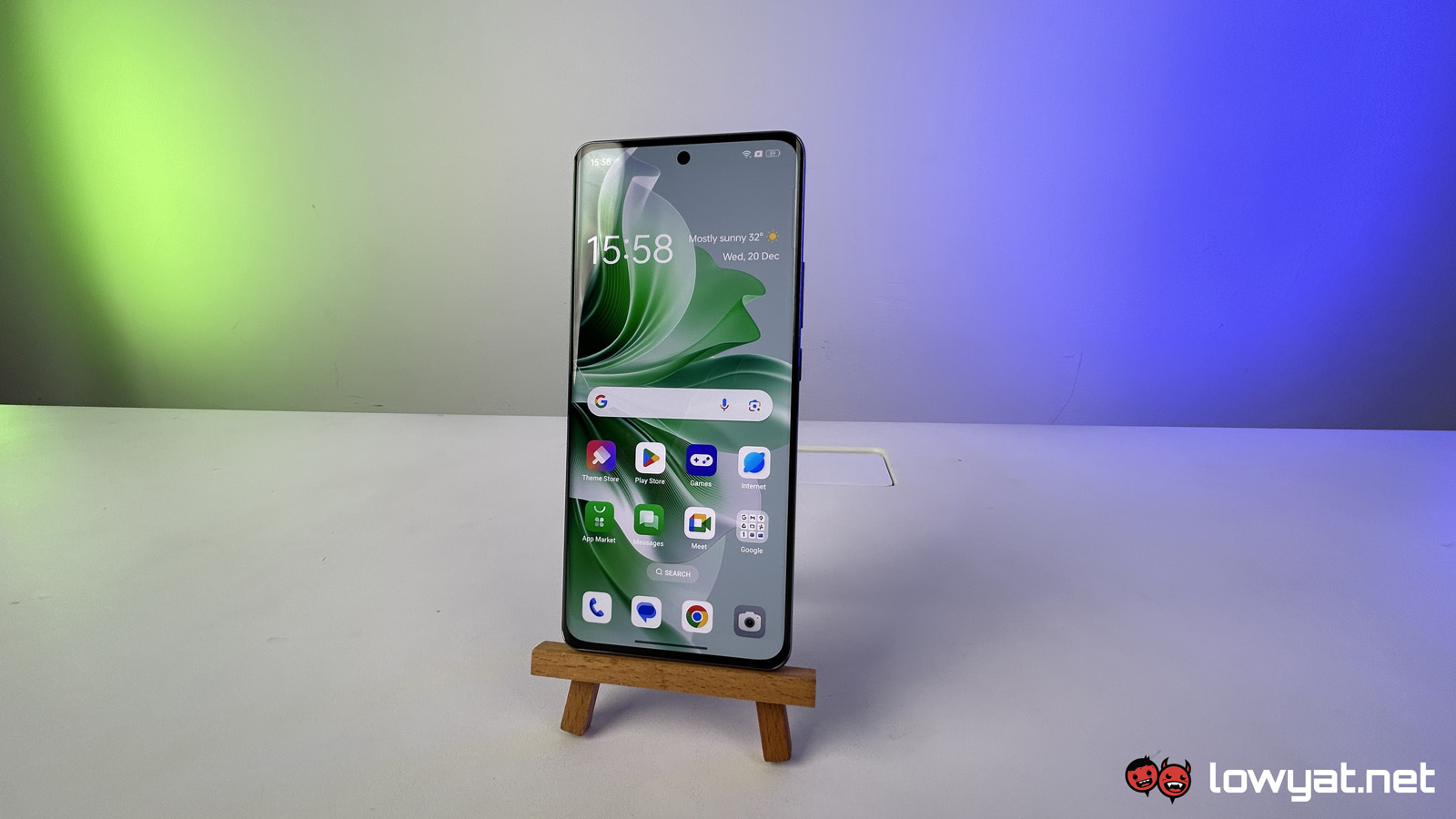OPPO recently brought over the Reno11 series to Malaysia, which is made up of the regular model and the higher-end Pro model. I’ve been testing out the Reno11 Pro for the last few weeks and I’ve gotta say, I’m a bit disappointed.
First of all, there’s no Pro Plus model this year, so you’re stuck with the 2x zoom telephoto lens of the Pro for this lineup. Secondly, it seems that the Reno11 Pro is basically just last year’s Reno10 Pro but with a better chipset and a different design on the back; almost all its specs, down to the camera sensors, are identical.
Specifications
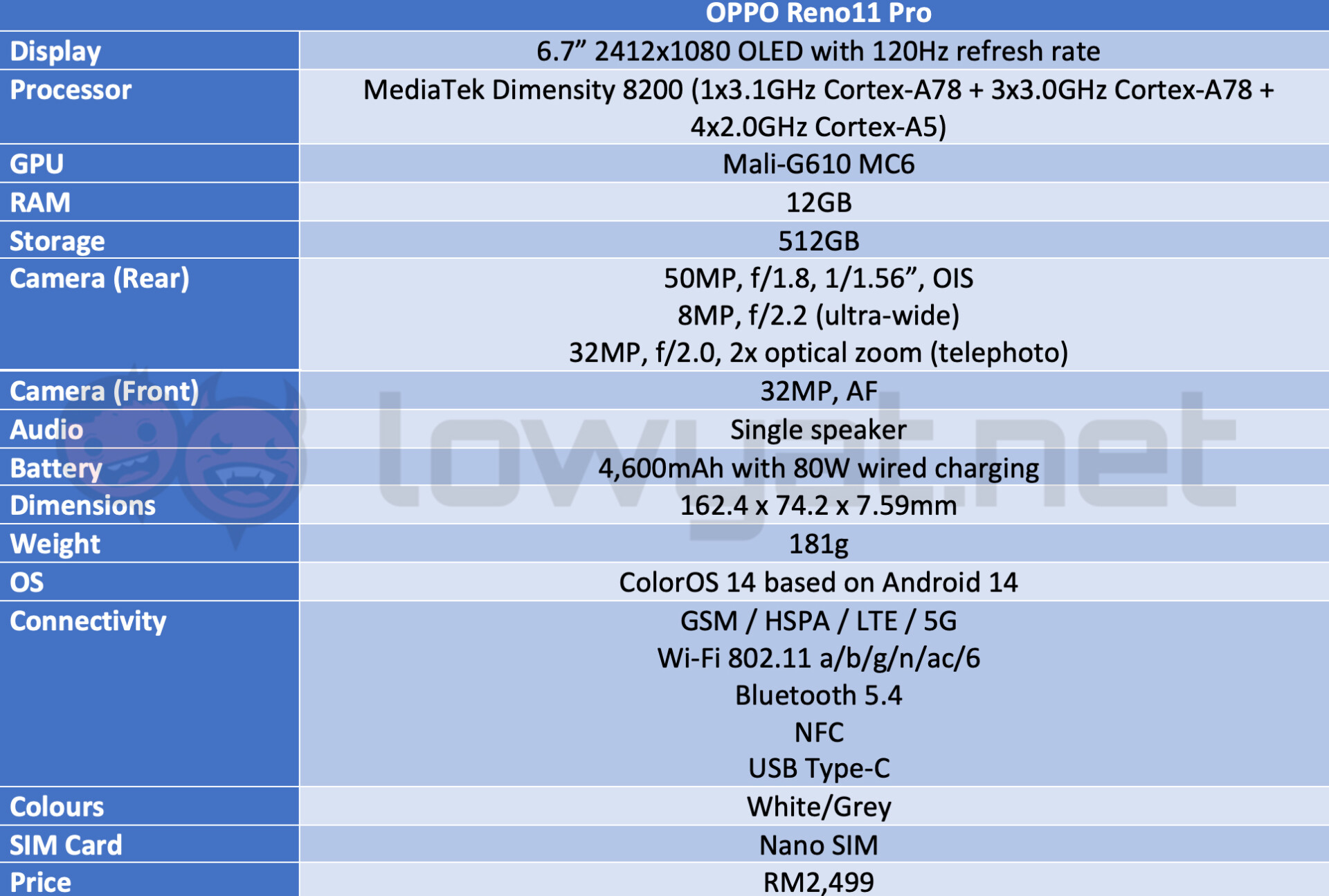 The phone sports the same 6.7-inch 1080p OLED display with 120Hz refresh rate as its predecessor, running on a MediaTek Dimensity 8200 chipset instead of the Qualcomm Snapdragon 8+ Gen 1 found in the Chinese counterpart. It comes in a single configuration with 12GB of RAM and 512GB of storage, with no microSD card slot unlike its cheaper sibling.
The phone sports the same 6.7-inch 1080p OLED display with 120Hz refresh rate as its predecessor, running on a MediaTek Dimensity 8200 chipset instead of the Qualcomm Snapdragon 8+ Gen 1 found in the Chinese counterpart. It comes in a single configuration with 12GB of RAM and 512GB of storage, with no microSD card slot unlike its cheaper sibling.
On the back, the camera setup comprise a 50MP Sony IMX890 main sensor with OIS, a 32MP Sony IMX709 telephoto lens with 2x optical zoom, and an 8MP Sony IMX355 ultra-wide lens. Up front, the punch-hole cutout houses a 32MP front shooter with autofocus.
Powering the Reno11 Pro is a relatively-small 4,600mAh battery with support for 80W fast charging. Connectivity-wise, it supports 5G, Wi-Fi 6, NFC, and Bluetooth 5.4.
Looks & Functionality
The unit that I have is Rock Grey, which has a soft-touch matte finish and despite the texture, it still has a glittery look to give it some sheen. Being that it has a matte finish, the Reno11 Pro is very good at keeping fingerprints away, a design that has proven to be quite popular in recent smartphone colourways, which I’m all for.
The display unfortunately has curved edges, something that I’m actively against, and while its more than acceptable when it comes to image quality – it’s a Full HD OLED display – the brightness leaves a lot to be desired. It has a typical peak brightness of only 500 nits and 950 nits when displaying HDR content; in my time with it, the display was nearly unreadable when used outside on a sunny day.
I usually don’t even mention the audio experience because most phones in this price range have acceptable-quality speakers but the Reno11 Pro notably only has a single downward-firing speaker. This is an odd choice for the company given that even the standard Reno11 has dual stereo speakers.
Both the volume rocker and the power button are located on the right-hand side of the phone, while the SIM card slot is positioned at the bottom. As a bonus, there’s an IR blaster on top in case you want to control some of your household electronics from your phone. There’s also a speedy under-display fingerprint scanner that is placed a bit too low — in OPPO’s defence, this issue exists for almost every Android phone.
Performance & Battery
While the Dimensity 8200 isn’t the best-performing SoC around — I honestly think it’s disappointing that the Snapdragon 8+ Gen 1 was glanced over for this chipset — it’s at the very least still a chipset that can handle regular tasks and everyday apps such as social media apps and the like. In my testing, I didn’t encounter any lagging or stuttering with real-life daily use.
When it comes to synthetic benchmarks, its scores were middling at best. Its stability score in 3DMark was below 50%, meaning that it does have a tendency to thermal throttle under a continuous heavy load and that it might not exactly be the best for gaming.
While the battery capacity is smaller than the industry standard of 5,000mAh, it still has a decent battery life. In daily usage, I was able to get between a day and a half to two full days with it, depending on how much I used the phone. In my opinion, if you can reliably get a whole day’s worth of use out of it, then it gets an “A”, while a two-day battery life is just a welcome bonus.
Of course, I put it through the usual YouTube streaming endurance test with the brightness and volume set at around 25%. The Reno11 Pro lasted close to 17 hours, which is longer than what most people would need to stream videos on their phone.
Camera
The cameras on the Reno11 Pro are generally great under ideal lightning but when it starts to get dark, or even just dim on a cloudy day, then so does the image at a noticeable amount. Not only does the image get dark, but it does tend to also look quite dull.
Meanwhile, the telephoto lens on the Reno11 Pro isn’t as powerful as the one in last year’s Pro Plus model, maxing out at only 20x digital zoom. Even within that range, the image quality starts to get blurry after you pass the 5x mark, although you can still seem some details for small objects such as the tip of the pen. Overall, the macro photography capabilities are usable but in most cases, you won’t end up with a photo you can show off.
Sample Images
Competition
Xiaomi 13T Pro
The Xiaomi 13T Pro is the brand’s latest upper-mid-range smartphone which features some impressive specs that beat out the Reno11 Pro within the same price range. It has a 6.67-inch AMOLED display with a 144Hz refresh rate and a much higher peak brightness of 2,600 nits.
Internally, it runs on the more powerful Dimensity 9200+ SoC with a 5,000mAh battery that supports 120W charging. On the imaging side, it is equipped with a 50MP main sensor with OIS, a 50MP telephoto lens with 2x optical zoom, and a 12MP ultra-wide shooter. The base model comes with 12GB of RAM and 256GB of storage and costs RM2,499, while doubling the storage to match the Reno will set you back RM2,699.
Conclusion
The OPPO Reno11 Pro is a fine mid-range offering with a reasonably solid camera for the price, good battery life, and above-average performance. It’s unfortunate, however, that it’s clearly a lazy repackaging of its predecessor with a mild upgrade to the processor. As per the comparison above, you can get a much more powerful device at this price point and if you already own the Reno10 Pro, there seems to be no compelling reason to upgrade to its successor.
Follow us on Instagram, Facebook, Twitter or Telegram for more updates and breaking news.


